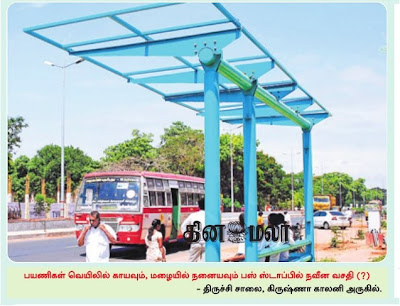Coimbatore region has given birth to many a freedom fighter. But not all have received their due share of recognition.
One among them was R. Kandasamy, born in Karamadai in an agricultural family on November 9, 1915.
Even when studying in St. Michael's High School, Coimbatore, he got attracted towards the freedom movement.
Later, he got himself involved with many leaders including T.S. Avinashilingam Chettiar, former State Education Minister, and C. Subramaniam, former Union Finance Minister.
After graduating from St. Joseph's College, Tiruchirappalli, he joined Law College in Chennai.
But life turned topsy-turvy even as Quit India Movement was launched by Gandhiji in August 1942.
When Kandasamy volunteered to do something for the movement, Avinashilingam Chettiar, who was his mentor, directed him to conduct meetings in and around Karamadai to make the people understand the importance of the movement and also distribute pamphlets explaining the same.
When Kandasamy was carrying out the instructions, he was arrested and charged with possessing prejudicial pamphlets against the Government.
C. Subramaniam's defence to get him I Class in jail failed and he had to undergo 21 months of imprisonment in subhuman conditions.
Originally incarcerated with his mentor in Coimbatore Jail, he was shifted to Vellore jail to have the privilege of being with R. Venkataraman, former President of India, Brahmananda Reddy, former Chief Minister of Andhra Pradesh and Subramaniam. He was then shifted to Thanjavur and Allipuram jails. After his release in April 1944, he was once again arrested to undergo imprisonment for six more months.
In spite of such a serious setback, he joined the Law College again.
But his love with the freedom struggle continued.
He used to attend all the meetings of the Congress party and undertake quite a lot of party work and he became quite familiar with leaders like C. Rajaji, former Governor-General of India, K. Kamaraj, former AICC President, M. Bakthavatsalam, former Chief Minister of Tamil Nadu and Kakkan and N.S.S. Mandradiar, former Tamil Nadu Ministers.
He had the privilege of being selected as one of the 40 volunteers for the Bhajans conducted by the Father of the Nation for 15 days under the auspices of the Hindi Prachar Sabha.
According to his daughter K.Vasantha, now an Associate Professor in the Avinashilingam Deemed University, Kandasamy used to say that his dream had come true and he had attained his life's fulfilment by closely watching the Mahatma for a fortnight.
After a short stint in the South India Mill Owners' Association as Labour Officer, he launched his legal career in 1950.
He rose to the level of Chief Public Prosecutor for undivided Coimbatore District in 1964.
Known in legal circles as ‘RK' and called as ‘Kovai Gandhi' by the masses, he was a leading legal luminary in Coimbatore city for more than five decades till he died in 2002 at the age of 87. He had about 25 juniors and a couple of them have been elevated to the Madras High Court as Judges.
His house on the Variety Hall Road, Coimbatore, which witnessed any number of meetings of Congress leaders and freedom fighters, is considered a heritage house. A voracious reader, especially of books on Philosophy, he had a good collection as well.
He was the President of the Coimbatore Freedom fighters Association twice and also the President of the Coimbatore Bar Association.
One who wore only Khadi and extended free legal aid and service to the downtrodden, he made his sons K. Ravindran and K. Jayaprakash also to choose the legal profession.
The first job he assigned to them was to serve in the free legal aid service cell in the District Court.
In his last speech on the All India Radio, Coimbatore, he pleaded that all the freedom fighters and their legal heirs should be given due recognition and the Government should take care of them.
Source-Hindu












































